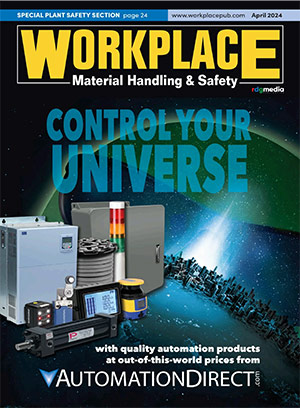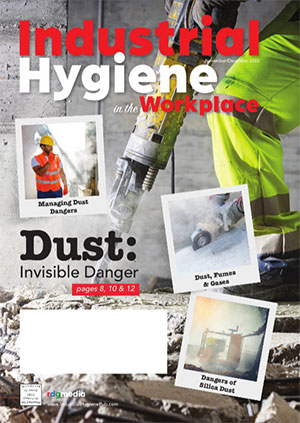Conventional vs. Robotic Palletizing: Making the Right Choice Based on Unique Palletizing Needs
Matt Wicks, Vice President, Product Development, Manufacturing Systems, Honeywell Intelligrated

Conventional automated palletizers have been around since the 1950s, but in the 1990s, gantry and then jointed arm robots made significant inroads in palletizing.
Conventional automated palletizers have been available since the 1950s. In the 1990s, gantry and then jointed arm robots made significant inroads in palletizing, leading many to conclude that the conventional palletizer’s days were numbered. Rather than getting immersed in ambiguous statistics and marketing buzzwords like flexible or fixed automation, this paper looks at the specific applications that favor each technology to chart the future of palletizing automation.
Applications that Favor Robotics
In addition to the coveted “wow” factor, articulated-arm robotic palletizers are an effective solution for simple, lower-speed operations; applications that handle a wide variety of SKUs; and operations in which the product shape demands precision, such as bags and pails.
Low-speed, simple case palletizing—For operations that have low speed and simple requirements for palletizing, robotics can be an attractive option. Minimal hardware requirements can mean that infeed conveyor, robot and safety standards are all that operations must account for, provided processes can allow for manual intervention to replace pallets or remove full loads. The addition of other automation, such as pallet and sheet handling or pallet conveyance, are all worth considering when evaluating a robotic cell. These options do add cost and may impact the overall throughput of the system, driving down the attractiveness of a robotic system to the end-user compared to more conventional machines.

A palletizing robot can simplify multi-line palletizing by eliminating the need for a complex upstream accumulation conveyor system.
Low-speed, multi-line case palletizing—In order to handle more than one product type at a time, a conventional palletizer must accumulate layers or loads of like product on an upstream conveyor system, before feeding them into a palletizer that automatically changes to the corresponding pattern. A palletizing robot can simplify multi-line palletizing by eliminating the need for a complex upstream accumulation conveyor system. The robotic cell has capacity for several loads, allowing the arm to work on all loads simultaneously. This is a very effective concept for lower speed lines, operating at a range generally under 15 cases per minute, per line. In addition, robotic systems can include sophisticated software to enable end-users to change how pallets are built based on the addition of new SKUs or other inventory changes. Conventional machines can also have similar software, but their capabilities are limited compared to robotic solutions.
Bag palletizing—Jointed-arm robots dominate the bag palletizing business. Clam-shell tooling allows the robot to pick a bag from a roller conveyor and place it on the load without disturbing the contents of the bag, resulting in a straight and square load. Furthermore, the bag being dropped into place allows the robot to achieve higher rates than case palletizing—frequently above 20 cycles per minute. Finally, the robots can work in confined spaces and dusty environments, adding to their appeal in bag palletizing applications.
Pail palletizing—Most pails are constructed so that the bottom of the pail nests inside the lid of the pail below when stacked on a pallet. End-of-arm tooling, controls and vision technology enable robots to achieve the necessary precision to achieve such nesting, placing the pails so that each layer fits inside the previous one, making pail palletizing an ideal robotic application.
Mixed, partial or display loads—Rising demand for specialized loads that arrive in sequence for retail replenishment or configured for display in stores introduces a high degree of complexity. These loads can require four-way, labels-out orientation; a variety of SKUs in a single layer or load; multiple different sheets within a single load; particular dunnage; and other specialization. While a conventional palletizer may be able to address these requirements, doing so may increase costs to the point where a robotic system, thanks to specialized end-of-arm tooling and software-driven versatility, is a more practical solution.
Applications that Favor Conventional Palletizing
Conventional automatic palletizers offer a range of speeds and options. They tend to outperform robotic solutions in the mid- to high-speed ranges, which is why they continue to be routinely specified for manufacturing lines found in the food, beverage and consumer goods industries. How fast? Inline, continuous-motion palletizers are capable of 200 cases and 20 layers per minute. Surprisingly, conventional palletizers can be more flexible than robots in regard to product packaging and stacking patterns.
Variable packaging types—Robots pick and place the product, while conventional palletizers simply convey the product into position. Since they never pick up and grasp the products, conventional palletizers can be more tolerant of packaging changes, allowing cases, trays, film bundles, polybags and other items to all be handled on the same palletizer. Depending on the packing variables, a robotic solution may require updated tooling and extensive modifications for seemingly simple packaging or product changes.
High-speed complex pattern forming—The act of individually conveying each case into position means pattern changes have a relatively small impact on rate. However, rates for robots can dramatically fall, as they depend on handling multiple cases at a time to achieve higher throughput. For example, changing from a nine-block, column-stacked pattern to a nine-block pinwheel pattern can frequently result in a 50% rate reduction on a robotic system.
Conventional and Robotic Hybrids
These palletizers combine robotic technology with the power of conventional palletizers, yielding a solution that provides the flexibility and repeatability of robotics with the speed and reliability of the conventional palletizer. There are two main approaches to hybrid palletizers, with the robotic arm handling separate tasks.
Robotic layer handling—One hybrid solution uses robotic technology to pick and deposit the entire layer. This can be slow and complex compared to the layer-depositing capability of a conventional palletizer. The benefit of this approach is that the overall machine can be positioned lower, at the floor level, which may be desirable based on site and accessibility constraints.
Robotic pattern forming—This concept combines the best of both technologies for high-rate applications. Robots precisely turn and position the cases, while conventional palletizing technology squares and deposits layers while handling other tasks, like handling slip or tier sheets, changing out pallets and other tasks independent of the robot. Since the robotic operation is only tasked with rotating and orienting cases, rather than picking and dropping them, it can be very efficient, operating at more than 40 cycles per minute on a wide range of package types. This approach also improves pattern flexibility and simplifies new pattern creation; as the robotic arm’s role avoids the need to reposition cases in fixed-lane locations. The cost for this concept is higher than conventional high-speed palletizers, but certain applications with high-speed and complexity demands can justify the added expense.
Conclusions
In short, no single technology is set to dominate palletizing for the foreseeable future—the best answer to palletizing challenges depends on the application.
- Conventional palletizers remain the leading mid- to high-speed palletizing solution. Robots cannot duplicate the continuous rates, complex patterns or range of packaging types. Additionally, the palletizer’s relative low cost reinforces their ongoing popularity.
- Robotic palletizers excel in simple, low-speed, multi-line and bag palletizing applications. Their precision, continued technological development and falling costs as technology matures bolster their continued growth.
- Hybrid conventional and robotic systems have growing potential. As technology advances and mass production lowers robot costs, hybrid solutions can deliver on more applications. WMHS




